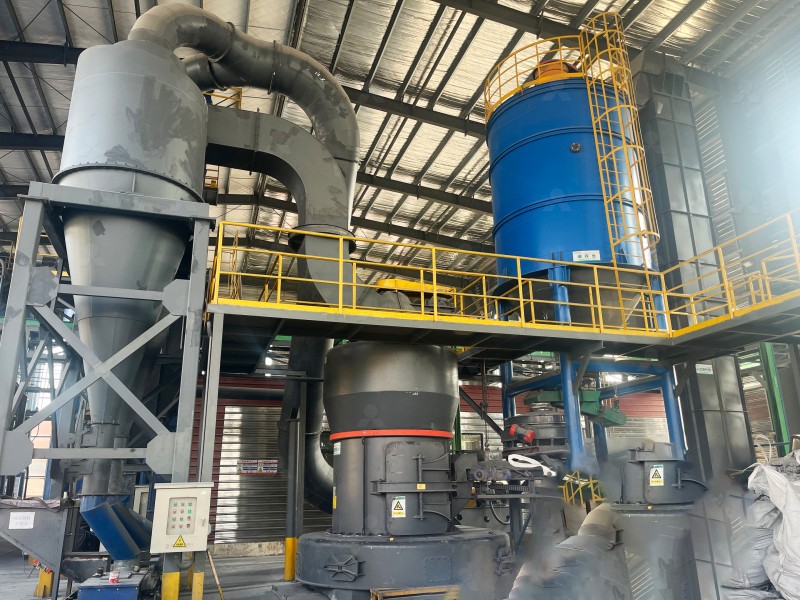How to Choose a 200 Mesh Raymond Mill for Efficient Powder Processing
Navigating the World of Fine Powder Processing
Selecting the right grinding equipment for achieving 200 mesh fineness can be challenging for many processing operations. The term “200 mesh” refers to a particle size of approximately 74 microns, a specification commonly required across numerous industries including chemicals, paints, cosmetics, and construction materials. While traditional Raymond mills have served this purpose for decades, modern advancements have introduced more efficient alternatives that deserve consideration.

Key Considerations for 200 Mesh Grinding
When evaluating equipment for 200 mesh powder production, several critical factors demand attention. Energy consumption represents one of the most significant operational costs in grinding operations. Traditional ball mills, while capable of achieving the required fineness, typically consume 30-40% more energy than advanced vertical grinding systems. Maintenance requirements constitute another crucial consideration, as frequent downtime for replacement of vulnerable parts can severely impact production continuity.
The physical footprint of the equipment directly affects facility planning and installation costs. Modern grinding systems often occupy 50% less space than traditional alternatives while delivering equivalent or superior throughput. Environmental compliance has also become increasingly important, with dust emissions and noise pollution subject to stringent regulations in most industrial regions.
Advanced Grinding Technology Solutions
For operations requiring consistent 200 mesh output with optimal efficiency, the MW Ultrafine Grinding Mill presents an exceptional solution. This advanced system processes materials with input sizes up to 20mm and delivers throughput ranging from 0.5 to 25 tons per hour. Its innovative design eliminates rolling bearings and screws within the grinding chamber, addressing common failure points that plague conventional mills.

The MW series incorporates German cage-type powder selector technology, enabling precise fineness adjustment between 325-2500 meshes. This flexibility ensures operators can consistently achieve the target 200 mesh specification while maintaining the capability to produce finer powders when required. The integrated pulse dust collector and muffler system effectively contains particulate matter and reduces operational noise, addressing key environmental concerns.
Comparative Performance Analysis
When benchmarked against traditional grinding systems, the MW Ultrafine Grinding Mill demonstrates remarkable efficiency improvements. Production capacity exceeds that of jet mills and stirred grinding mills by approximately 40% at equivalent fineness and power consumption. Compared to ball mills, the MW system doubles output while reducing energy usage by approximately 30%.
For operations requiring even higher precision, the LUM Ultrafine Vertical Grinding Mill offers additional advantages. With its unique roller shell and lining plate grinding curve design, this system generates material layers more effectively, enabling high finished product rates through single-pass powder milling. The LUM mill’s multi-head powder separating technology, controlled through a PLC system, provides exceptional control over grinding parameters and product consistency.
Operational Longevity and Support
Beyond initial performance metrics, long-term reliability significantly impacts total cost of ownership. The absence of internal rolling bearings in the MW grinding chamber eliminates concerns about bearing damage or seal failures. External lubrication systems enable maintenance without production stoppages, supporting continuous 24-hour operation. Digitalized processing of core components ensures high machining precision, contributing to extended service life and consistent performance.

Comprehensive technical support and genuine spare parts availability further enhance operational reliability. With businesses covering both production and sales, manufacturers assume responsibility for every machine, providing customers with complete operational assurance.
Application-Specific Recommendations
The optimal equipment selection varies according to specific material characteristics and production requirements. For limestone, calcite, dolomite, and similar minerals targeting 200 mesh fineness, the MW Ultrafine Grinding Mill typically delivers the most favorable balance of efficiency and operating cost. For specialized applications requiring extreme product purity, such as cosmetics, pharmaceuticals, or high-value chemical additives, the LUM Ultrafine Vertical Grinding Mill’s superior contamination control may justify the additional investment.
Frequently Asked Questions
What is the main advantage of the MW Ultrafine Grinding Mill over traditional Raymond mills?
The MW system provides 40% higher production capacity than jet mills and double the output of ball mills at the same power consumption, while offering more precise fineness control between 325-2500 meshes.
Can these grinding mills handle moist materials effectively?
While both MW and LUM mills primarily process dry materials, integrated drying systems can be incorporated for materials with moderate moisture content. For high-moisture applications, pre-drying is recommended.
How does the maintenance requirement compare between these advanced mills and traditional equipment?
The elimination of rolling bearings and screws in the grinding chamber significantly reduces maintenance needs. External lubrication systems allow servicing without shutdowns, minimizing production interruptions.
What safety features are incorporated into these grinding systems?
Both mills include comprehensive safety systems including pulse dust collectors to prevent dust explosions, noise reduction technology, and automatic monitoring systems to detect abnormal operating conditions.
How quickly can fineness be adjusted between different specifications?
The advanced powder selection systems enable rapid fineness adjustments, typically requiring only parameter changes in the control system rather than mechanical modifications.
